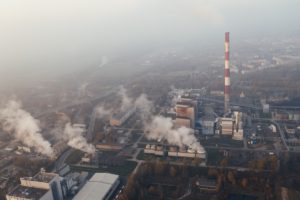Permitting a Greenfield Combined Cycle Natural Gas Power Plant
Industry:Power
Service Area:
Air Quality Modeling
Air Quality Permitting
Client's Challenge
ALL4 was asked to develop an air permit application for the construction of a new 500 megawatt (MW) combined-cycle energy center to be located in the northeast U.S. The location of the new proposed energy center was in an area classified as nonattainment for the particulate matter less than 2.5 microns (PM2.5), sulfur dioxide (SO2), and ozone (O3) National Ambient Air Quality Standards (NAAQS) as a result of being located in the Northeast Ozone Transport Region (OTR). Nitrogen oxides (NOX) and volatile organic compounds (VOC) were evaluated as nonattainment pollutants as precursor pollutants to O3. As a new 500 MW energy center, the facility’s emissions profile triggered major new source review (NSR) permitting requirements which required both prevention of significant deterioration (PSD) and nonattainment new source review (NNSR) permitting. PSD permitting required a NAAQS air quality modeling demonstration and best available control technology (BACT) review and NNSR permitting required a lowest achievable emissions rate (LAER) review and the purchase of emissions reduction credits (ERCs).
ALL4’s Solution
ALL4 developed an emissions inventory that included proposed operating scenarios and emissions limits which resulted in the facility only triggering NNSR for NOX and VOC and triggering PSD review for carbon monoxide (CO), particulate matter less than 10 microns (PM10), and greenhouse gases (GHGs). The permitting agency requested that a PM2.5 air quality modeling analysis be completed even though PM2.5 was not subject to PSD and is not required as part of the NNSR permitting program. As part of the air quality modeling demonstration ALL4 was able to model below the CO and PM2.5 significant impact levels (SILs). The 1-hour nitrogen dioxide (NO2) air quality modeling analysis resulted in impacts greater than the NO2 SIL and therefore required a NAAQS air quality modeling demonstration. However, triggering the 1-hour NO2 NAAQS analysis provided the “room” to permit a large number of start-up events which added flexibility to the proposed facility operating scenarios. As part of the air quality modeling analyses, ALL4 worked with the developer to identify the stack height, stack location, and building arrangement that resulted in best dispersion and lowest modeled concentrations.
 The Results
The Results
By optimizing operating scenarios, emissions limits, and facility layout, ALL4 was able to avoid the following more onerous permitting paths:
- Avoided SO2 and PM5 NNSR review permitting requirements that would have included implementation of LAER and purchasing SO2 and PM2.5 ERCs (which are difficult and costly to obtain).
- Avoided PM5 NAAQS air quality modeling by modeling below the PM2.5 SIL. PM2.5 NAAQS air quality modeling can be difficult when adding in background PM2.5 concentrations that are very close to the PM2.5 NAAQS and therefore leave little “headroom” for new permitted sources.
Ultimately, ALL4 was able to assist the client with obtaining a construction permit for the development of a 500 MW energy center located in an area that has complex environmental regulations. The construction permit also allows the energy center to operate 8,760 hours per year and the flexibility to startup 365 days/year if necessary.

 The Results
The Results